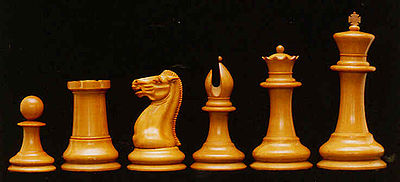Chess : Carlsen on course for UK plum
Magnus Carlsen moved into position for his first open title this year, scoring six points, to take a half point lead at the Isle of Man international open in Douglas, United Kingdom.
The 26-year-old Norwegian, the reigning world champion and seeded No. 1, had five wins and two draws out of seven games, in the nine-round Swiss that brought together more than 50 strong GMs, including three former world champions.
Five other players led by No. 2 seed Fabiano Caruana (USA) were within half-a-pont of the lead entering the penultimate round. They were No. 4 seed Hikaru Nakamura (USA), defending champion Pavel Eljanov of Ukraine, Indian Vidit Santosh Gujrathi and Israeli stalwart Emil Sutovsky.
.
–– ADVERTISEMENT ––
![]() .
.
Former world champion Vishy Anand of India and many-time women’s world champion Hou Yifan of China were one point back with five points, while Russian ex-world champion Vladimir Kramnik was 1.5 points off the pace.
Below is an interesting positional battle, with the world champion showing excellent technique.
Isle of Man 2017
W) P. Eljanov (Ukraine)
B) M. Carlsen (Norway)
Owen’s Defense
1. Nf3 b6
2. e4 Bb7
The Owen’s Defense, which aims to fight for the center by playing …Bb7 early, is named after the British player John Owen (1827-1901). The opening became popular after Owen defeated the great American unofficial world champion Paul Morphy, in a match game in 1858. Later, Owen successfully employed the opening in the great 1862 London tournament, finishing a strong third, ahead of the undisputed first world champion Wilhelm Steinitz.
3. Nc3 e6
After 3…g6 4. d4 Bg7 5. Bbc4 e6 6. 0-0 Ne7 7. e5 0-0 8. d5, White has a big space advantage. Lalic-Kengis, 1991 European Ch.
4. d4 Bb4!
The system of development chosen by Carlsen is best and leads to equality. After 4…Ne7 5. Bd3 d6 6. h4 Nd7 7.h6 h7 8. Bf4, White has a clear advantage, Shechekachev-Wohl, France 2001.
5. Bd3 Nf6
6. Qe2 d5
7. exd5 Qxd5
If instead 7…Nxd5 8. Bd2 Nxc3 9. bxc3 Bd6 10. Bg5 Qc8 is about even, according to the engine.
8. O-O Bxc3
9. bxc3 Nbd7
10. c4 Qh5
11. Bf4 Rc8
12. a4 …
12. Ne5 seems stronger. E.g. 12…Qxe2 13. Bxe2 Nxe5 14. Bxe5 0-0 15. a4, and White has a slight edge.= computer.
12… a5
13. Rab1 O-O
14. Rb5 c5
15. dxc5 Rxc5
16. Bd6 …
Not a good choice. 16. Ne5 is better, and after 16…Qxe2 17. Bxe2 Rcc8 18. Rd1 Nxe5 19. Bxe5 Ba6 20. Rxb6 Bxc4 21. Bbf3 Bd5, the game is in the balance.=Engine.
16… Rxb5; 17. cxb5 Rc8; 18. c4 Nc5; 19. Bc2 Nce4; 20. Bf4?! …
This dubious move yields to Black the initiative. 20. Be7 has to be played.
20… Nc3!
Now the weak c pawn is under tremendous pressure and will be exploited.
21. Qd3 Qg4; 22. Be5? …
One more inaccuracy, which loses a pawn without compensation. 22. Qxc3 is probably better, although Black retains the advantage after 22…Qxf4.
22… Qxc4; 23. Qxc4 Rxc4; 24. Bd3 Rc8; 25. Ra1 Nfd5; 26. Nd2 f6; 27. Bd6 Nb4; 28. Bc4 Bd5; 29. Bf1 Nba2; 0:1
There’s nothing else. Black picks up a second pawn in an advantageous position.
Solution to last week’s puzzle:
White to move and win.
White=Kg2, Qh5, Rd7, Ba4, Pa2, Pe4, Pf2, Pg3, Ph2
Black=Kg8, Qc4, Rf8, Nb4, Pa6, Pe5, Pf7, Pg7
1. Bb3! Qxe4ch
1…g6 2. Qxg6ch fxg6 3. Bxc4ch Kh8 4. Rd6 Kg7 5. a3 Nc2 6. Rxa6 is hopeless for Black.
2. f3 Qh7
Or 2…Qe2ch 3. Kh3 Qf1ch 4. Kg4 followed by 5. Bxf7ch.
3. Qxf7ch! Rxf7
Or. 3…Kh8 4. Qxf8ch
4. Rd8 mate.
Black to move and win.
Courtesy: The Philippine Star | Updated October 1, 2017 – 12:00 am


 LET’S PLAY CHESS By Edgar De Castro
LET’S PLAY CHESS By Edgar De Castro







